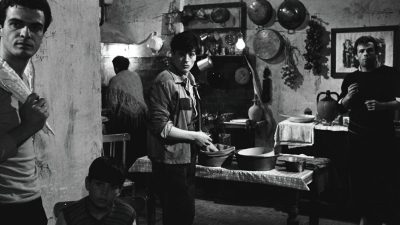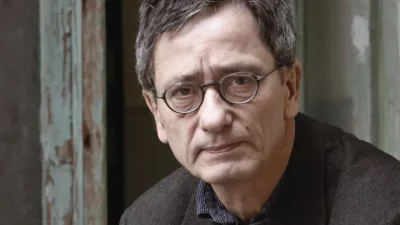On Sunday evening, the Béla Bartók National Concert Hall at Müpa Budapest will be filled with the incomparable, familiar yet constantly surprising sound of the cimbalom. The legendary teacher of the Academy of Music will present seven young cimbalom players in an evening entitled Kálmán Balogh and the Cimbalom Players of the Future, and then he himself will showcase his breathtaking talent with Ferenc Zimber and Dániel Szabó, in the recently formed Cimbalom Trio.
Kálmán Balogh regularly takes Hungarian folk music to the world’s most important concert halls, such as the Concertgebouw in Amsterdam, the Carnegie Hall in New York, or the Elizabeth Hall in London. The cimbalom player who comes from a long line of musicians also teaches folk music at the Liszt Academy of Music and is also at home in classical music, folk music, jazz, and world music. Now he is presenting his magical instrument and his students, the cimbalom players of the future, at home in Müpa Budapest.
When foreign musician friends come to visit, they often want to go to a restaurant where they can listen to live gypsy music. Instrumentalists who have graduated from prestigious foreign music academies are fascinated by the strings, praising their flawless intonation, amazing technique and the ease with which the musicians handle their instruments, and marveling at the clarinet’s varied, effortless runs. But when they really are at a loss for words is the moment when the cimbalom launches into its magical solo.
It is clearly difficult to play any instrument really well, but playing the cimbalom seems surreal at first glance. To the outside observer, it’s truly incomprehensible how the small felt-covered beater manages to navigate its way through the groups of strings (or ‘choruses’ in cimbalom parlance). Foreign musicians visiting a Hungarian restaurant cannot believe their eyes and ears. Especially when they hear that a few decades ago, gypsy musicians acquired this impressive knowledge without any institutional training, passing it on from father to son (or mother to daughter, since there are many women among the most famous cimbalom players).
The same sense of awe and enthusiasm also grips audiences at concerts, too, where, for example, Liszt’s cimbalom version of the Hungarian Rhapsody No 2 is performed. A few weeks ago, for example, audiences at the Santa Cecilia Concert Hall in Rome and Carnegie Hall in New York could listen (and watch!) a breathtakingly virtuosic performance by Jenő Lisztes. The ovation was, of course, unstoppable.
Foreign listeners are therefore awestruck by this instrument and they admire it, and we Hungarians often feel something special in our hearts. “Hungarians felt that his emotions had their own special elements, which no other instrument can express as warmly, faithfully and directly as the cimbalom. And so, even though they accepted the piano as an instrument, they particularly grew to love the cimbalom,” wrote master luthier József Vencel Schunda, the creator of the modern pedal cimbalom, in his book The History of the Cimbalom.
And we indeed grew to love it. In the 19th century, it became a musical symbol of the Hungarian nation’s desire for independence. It played an important and symbolic role in Ferenc Erkel’s Bánk bán, and later Kodály, Eötvös and Kurtág composed for the cimbalom alongside Liszt. “The cimbalom […] transforms the joy and sorrow of the Hungarian people into a resounding word. In his book”, Schunda enthused. “The cimbalom follows the circulation of our blood, it blends in with the Hungarian soul like no other instrument”. This is surely one of the reasons why the cimbalom was declared a Hungaricum in 2015.
There has been a cimbalom department at the Academy of Music since 1890, which was briefly closed in the 1950s after the death of the legendary Aladár Rácz, but it has been back in operation since the 1960s, launching generations of cimbalom players. Now you can listen to both classical and folk cimbalom here, with Kálmán Balogh producing the most talented folk cimbalom players every year.
The performance of Kálmán Balogh and the Cimbalom Players of the Future will take place on Sunday, 26 November, as part of Müpa Budapest’s World Solo series, where the audience will be treated to Hungarian folk music, Romanian folk tunes, jazz improvisations and surprises.
Article: Zsuzsanna Deák
Translation: Zsófia Hacsek



























Comments